What is under a "repatinated" surface?
I took a common and inexpensive type of Constantine which had been repatinated with the common yellow/orange applied cover. (A follis of Galerius is a second example below).
 1) I washed it using soap and warm water. Little happened. [After each treatment I dried it with a hair-dryer set on low.]
1) I washed it using soap and warm water. Little happened. [After each treatment I dried it with a hair-dryer set on low.]
2) I put acetone [fingernail polish remover] on a Q-Tip and rubbed it all over. The Q-Tip rapidly turned black.
3) Checking the coin under magnification, I could see I missed a few spots so I used acetone again targeting the spots I missed the first time. The new Q-Tip turned black, but not so much rubbed off this time.
4) I washed it using soap and warm water. Little happened.
5) I applied Blue Ribbon coin conditioner (which adds gloss).
Each treatment occupied a minute or less. Here are photos at each stage.
Original:
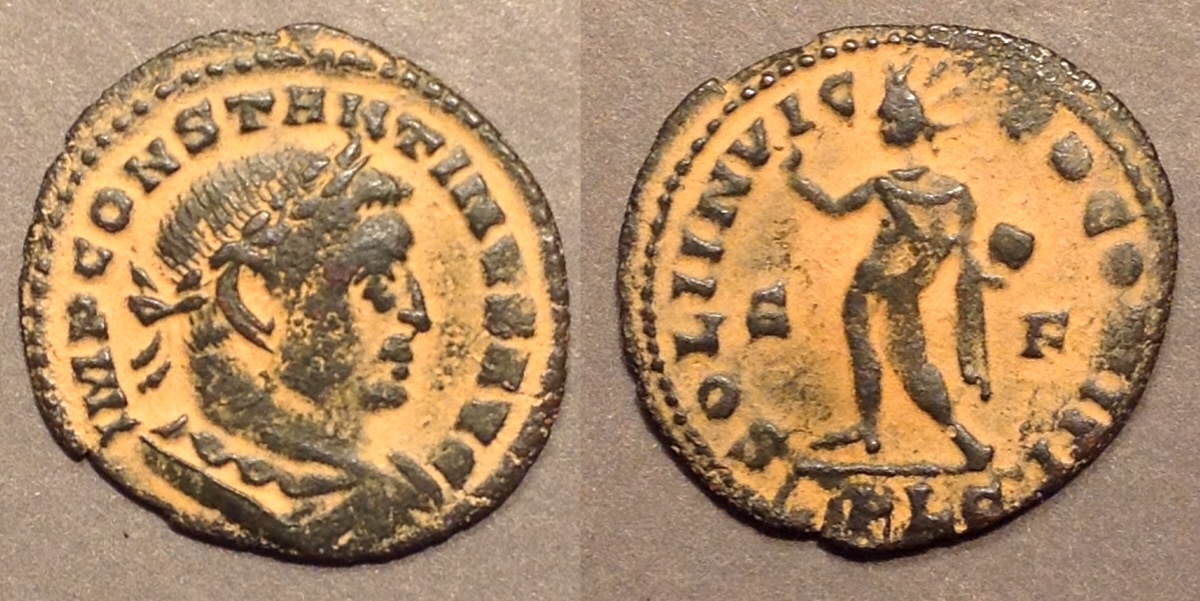
After soap and water:
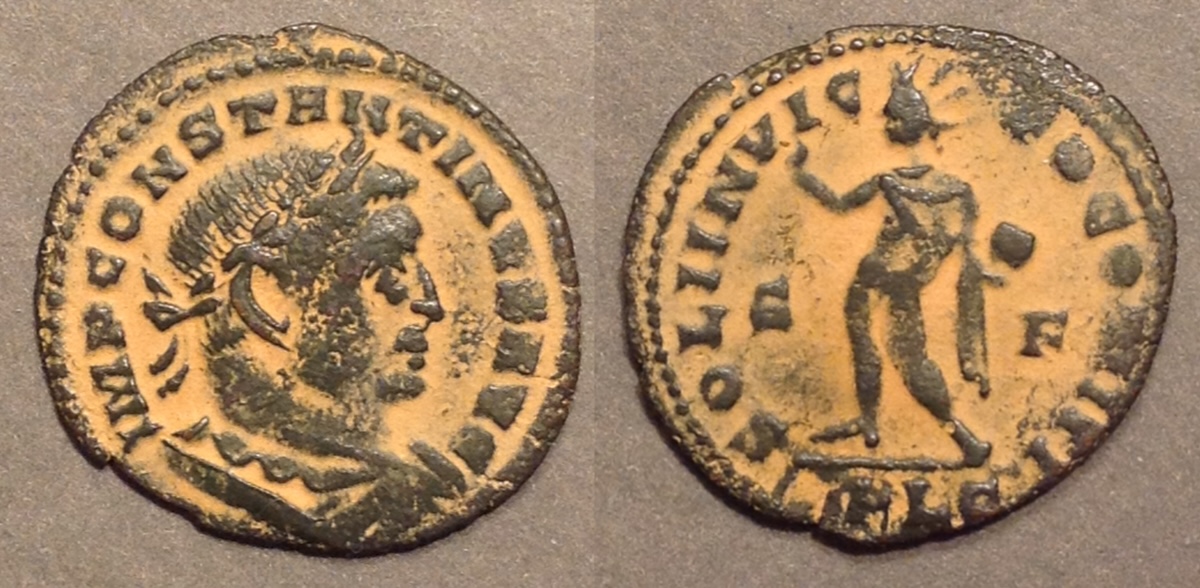
After acetone, one time.
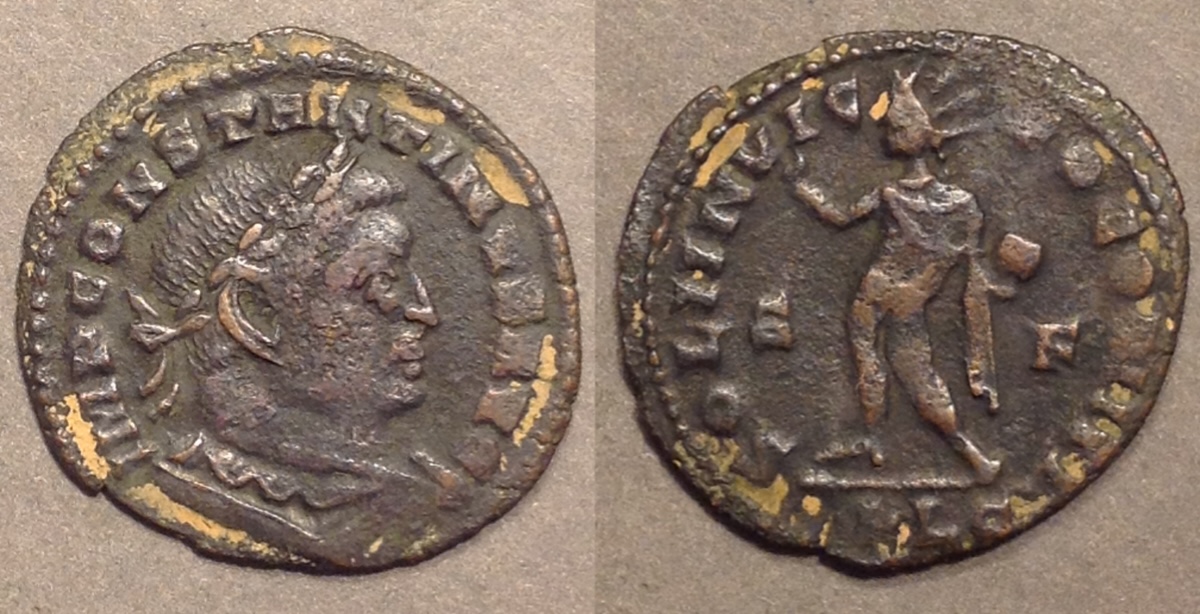
After acetone, the second time:
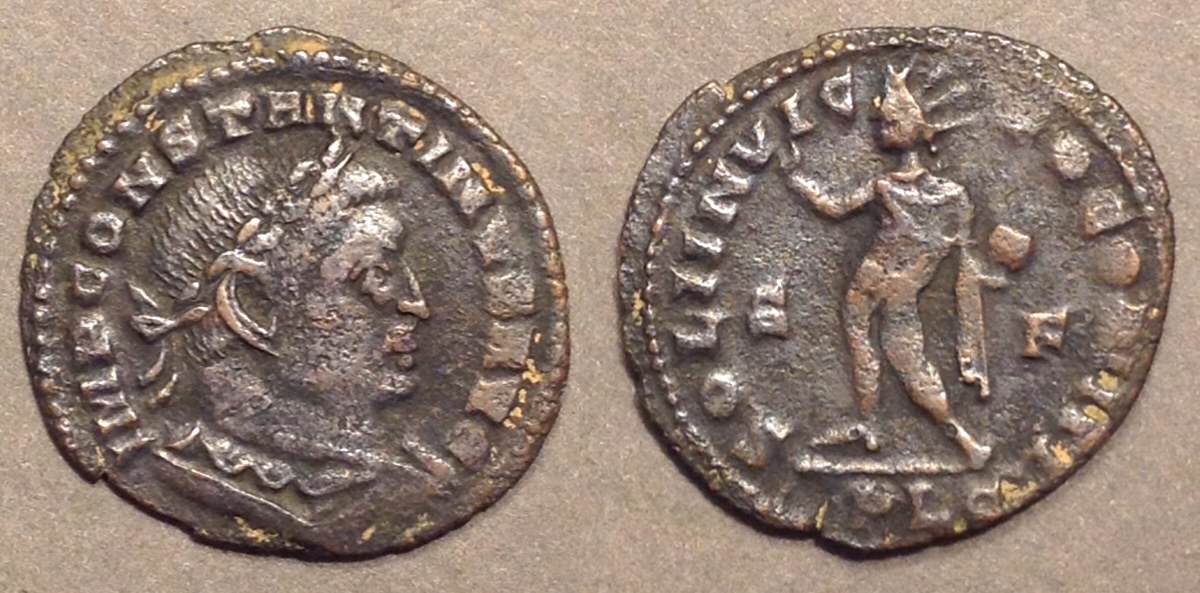
After soap and water after the two acetone cleanings:
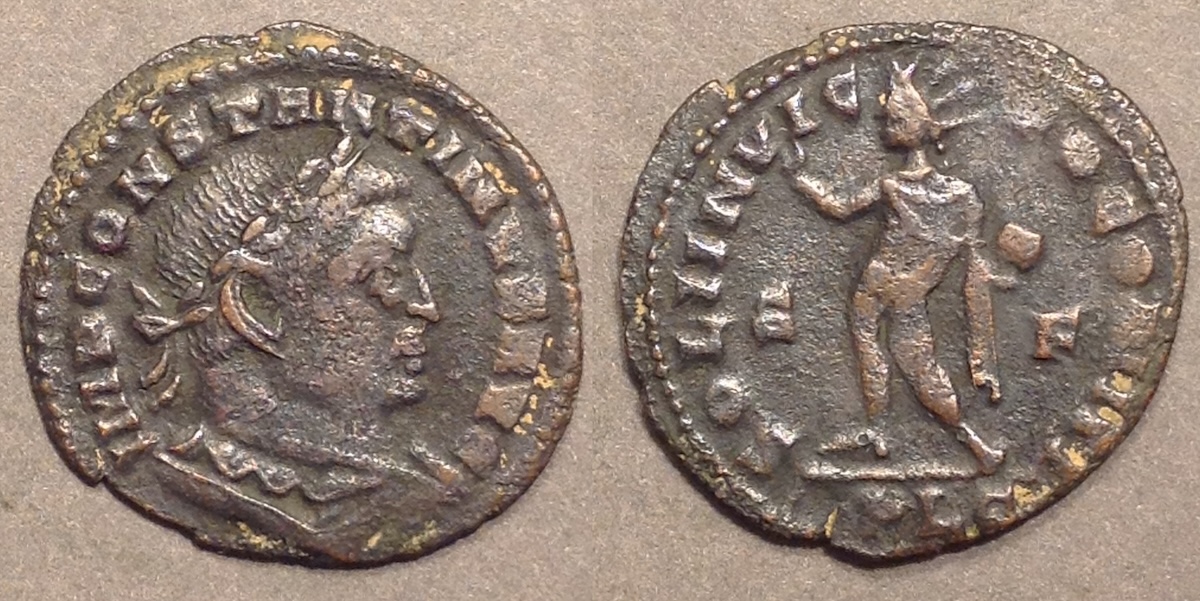
After Blue Ribbon coin conditioner applied:
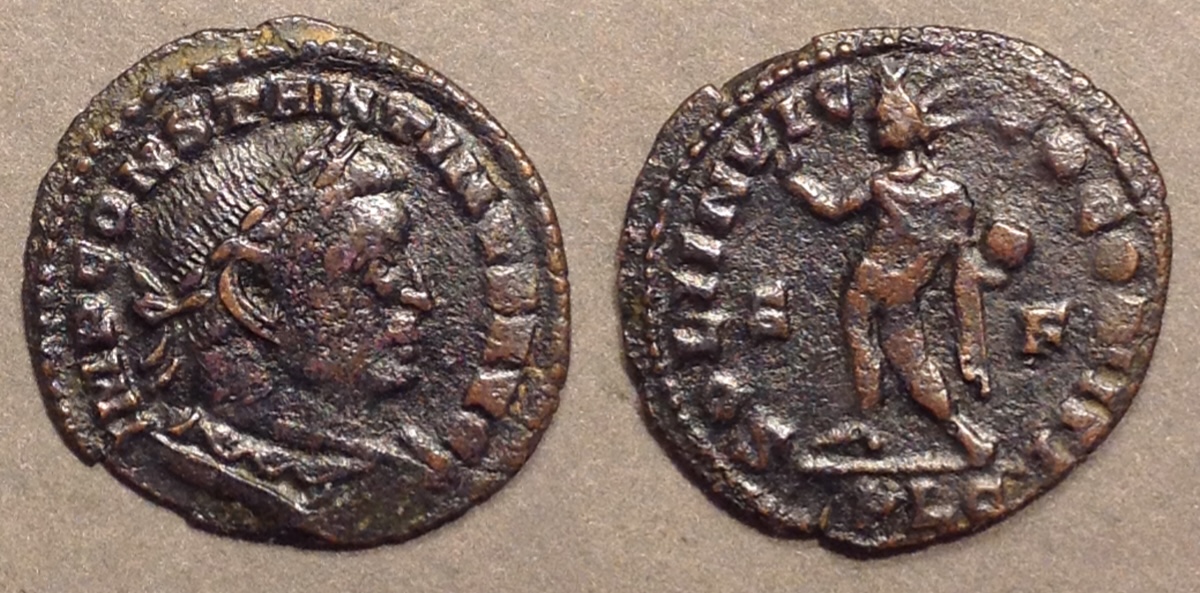
So, what do you think? Was it "better" before removing the repatination? If it became better afterwards, should I have stopped before applying the Blue Ribbon coin conditioner?
Here is a second example. It is a follis of Galerius. 27-26 mm. 8.63 grams.
As bought:
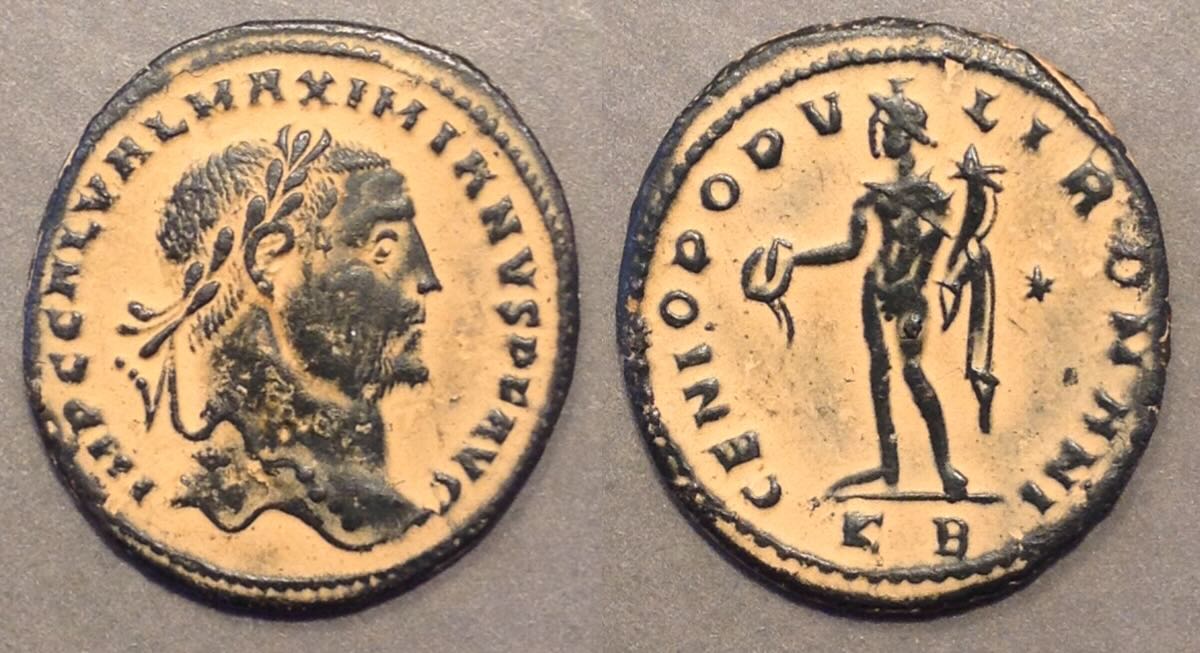
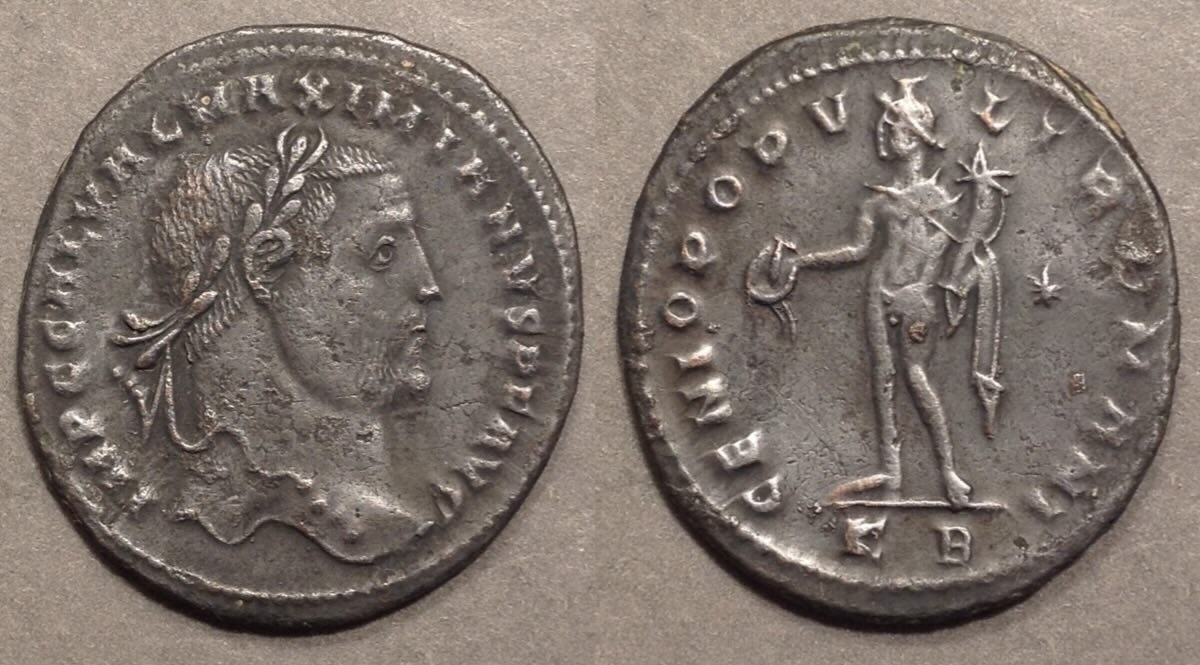
After three applications of acetone with QTips and washing with soap and water. Almost all the change resulting from the first wiping with acetone. The second cleaned up a few remaining bits of yellow and the third did almost nothing. Unlike the previous coin, no coin conditioner was appplied after the cleaning.
Suppose you had this coin as it is in the bottom photo. Would it be "better" (in your opinion) with the "repatination" in the top photo?
Go back to the page on altered surfaces.







